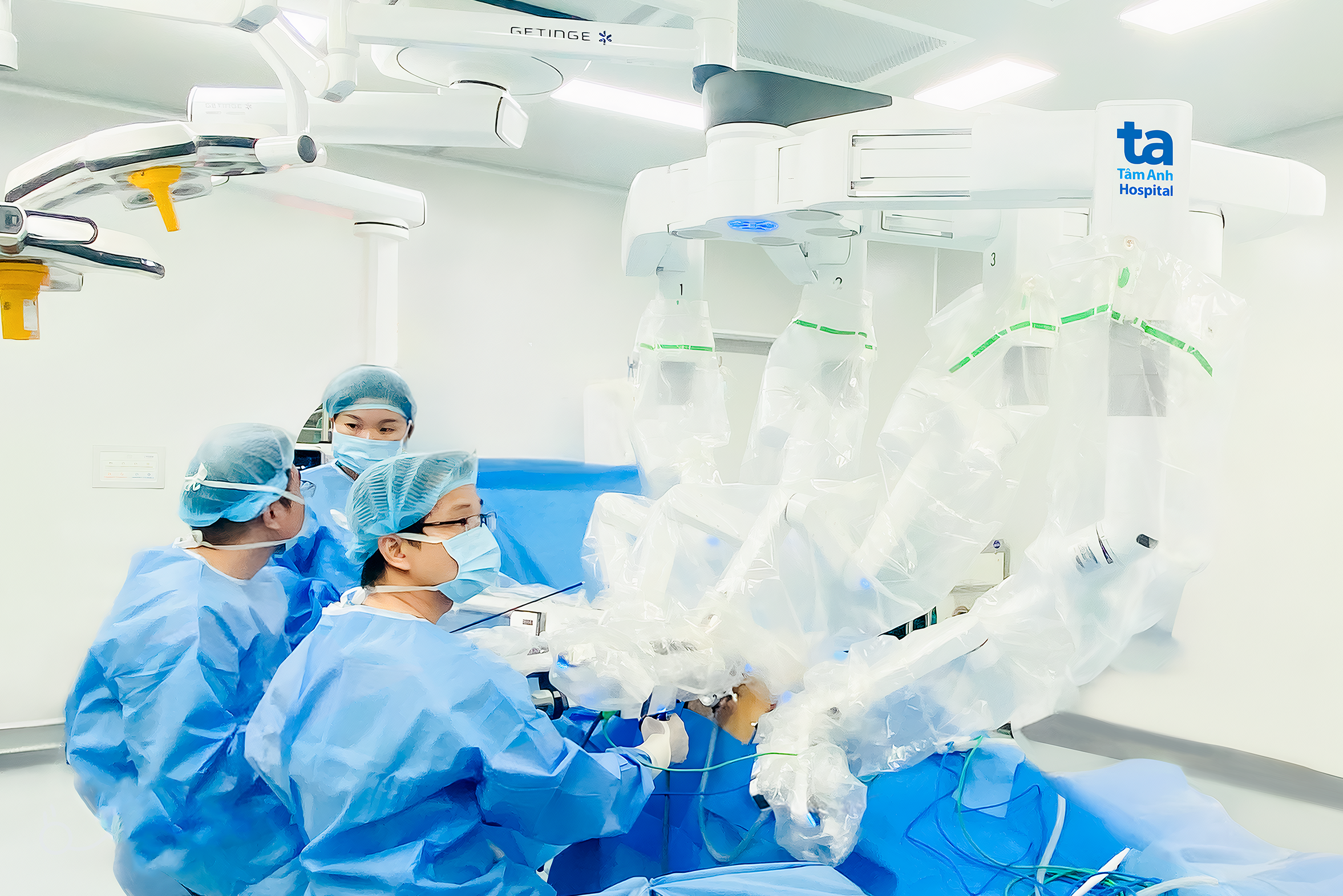A CT scan at Tam Anh General Hospital in Ho Chi Minh City revealed a 4 cm tumor in Vinh's kidney, surrounded by a blood clot. The tumor appeared to have ruptured and was bleeding. "This is a very serious and rare emergency. Without prompt treatment, the patient risks death from hemorrhagic shock," said Professor Doctor Vu Le Chuyen, Director of the Center for Urology, Nephrology, and Andrology. He ordered emergency surgery assisted by the Da Vinci Xi robotic surgical system.
According to Professor Chuyen, the surgery was challenging due to the high risk of blood loss, necessitating the removal of Vinh’s left kidney. The surgeon used the robot's arms to dissect the tissues around the kidney, clamp the arteries and veins, locate the bleeding tumor, and quickly stop the bleeding.
After 45 minutes, the surgery was successful. Post-operatively, Vinh began walking and doing light exercises, and is scheduled for regular follow-up appointments.
 |
Doctors perform emergency surgery on Vinh. Photo: Tam Anh General Hospital |
Doctors perform emergency surgery on Vinh. Photo: Tam Anh General Hospital
According to Doctor Nguyen Tan Cuong, Deputy Head of the Urology Department at the Center for Urology, Nephrology, and Andrology, a ruptured kidney tumor is a dangerous condition that causes internal bleeding, severe abdominal pain, and a drop in blood pressure (Wunderlich syndrome). Most cases of spontaneous bleeding around the kidney are caused by a ruptured kidney tumor. Some cases may occur after blunt trauma from accidents or in patients with conditions like hydronephrosis, large kidney cysts, or renal vascular malformations. The most common cause is benign tumors such as angiomyolipoma, while kidney cancer, as in Vinh's case, is less common.
The exact mechanism of tumor rupture is unclear, but it may be due to the tumor directly invading vascular structures or becoming obstructed, increasing renal venous pressure. Extensive necrosis and rapid growth of the tumor are also considered potential causes of rupture.
Symptoms include severe back pain, blood in the urine, fever, nausea and vomiting, dizziness, shock, and fainting if there is significant blood loss. Patients require immediate surgical intervention, resuscitation to stabilize blood pressure, and measures to stop the bleeding. Treatment options include embolization to block the blood vessels feeding the tumor, helping to stop the bleeding and preserve the kidney. Surgical removal of the kidney tumor or the entire kidney may be necessary when the patient's condition is stable.
Ha Thanh
*The patient's name has been changed.












